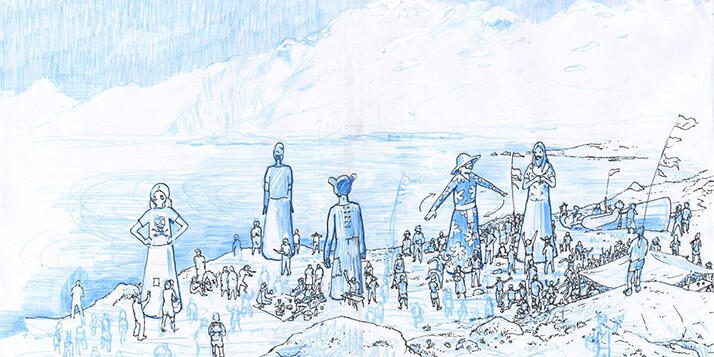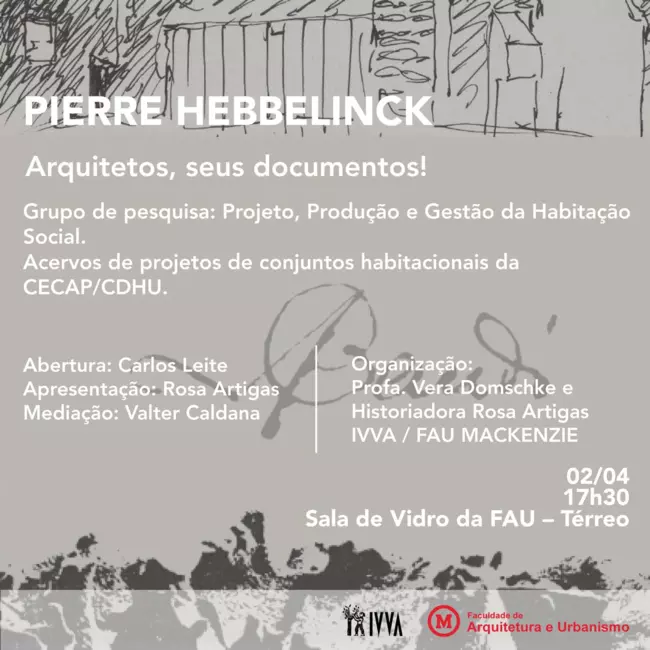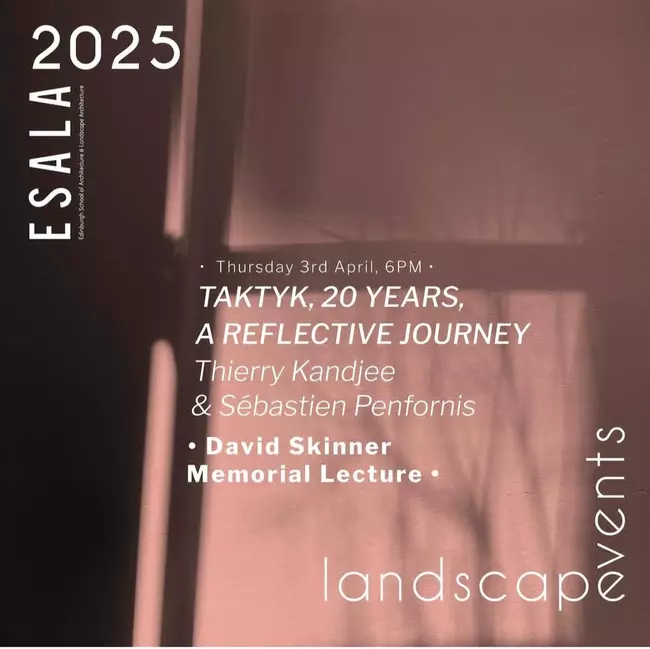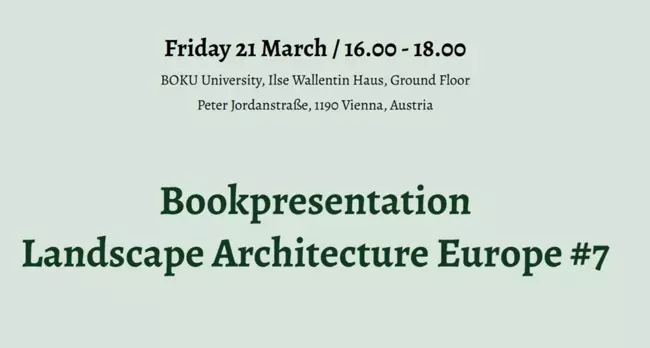- NewsSite Internet
Published on 15/03/2024
Belgian Pavilion at Venice Biennale 2024

© WBA The collective behind Petticoat Government (Denicolai & Provoost · Antoinette Jattiot · Nord · Spec uloos) was selected to represent the Wallonia-Brussels Federation and Wallonia-Brussels International at the 2024 Venice Biennale.
Bringing together the disciplines of art, curating, architecture, typography and cartography, the collective seeks to take up the exhibition format while working in collaborative and transdisciplinary mode to transform and explode it, in a fiction-like work in successive chapters that traverses time and space. Joining together here to effect a crossing of boundaries both physical and symbolic, the members of the collective were already linked by long term collaborations and their role as mediators and critics in their respective fields, artistic or otherwise. It is from this position that they now propose to examine the ways we understand popular, alternative forms of collective organisations and their modes of participation.
For the 2024 Venice Biennale, the Petticoat Government collective has developed a multidisciplinary scenario based on the participation of processional giants from different communities in Belgium, France, Spain. Their journey to Venice, which will see them cross the Resia Pass in the Alps on 9 March 2024, and their subsequent journey northward to Charleroi and Dunkirk in 2025, will inject a joyful disturbance into reality through a variety of effects of scale, highlighting tensions between the human and the non-human, landscape and architecture, borders and transgressions. Unlike a finished work, the project treats the Belgian Pavilion in Venice as a point of transit, representing the journey so far and yet to come in a kaleidoscopic perspective. The elevated staging of the giants and the accompanying sound installation create an ungrounded space, a terrain of freedom where emphasis on the oral and the co-construction of narratives invites reconsideration of both ancient tales and modern myths.
Inspired by an English phrase meaning government by women and thus an inversion of the usual power relations, the title is intended to allude to a continuing disruption. Given this, the collective is not a government, and the sense of the minor implied by the “petti” and the gendered associations of “petticoat” together with the scalar inversion effected by the giants suggest a critique of institutions and relationships of power. The project proposes a paradigm shift in blurring the frontiers between disciplines and between artistic and popular cultures. The collective and their many collaborators seek to realize the potential of the mixing of genres and attitudes as a means of exploring complexity and making present the worlds they are engaged with. Rather than a critique of the notion of the author per se, the project selected for the Belgian Pavilion at the Venice Biennale of 2024 is intended to highlight the potential of collective making and doing together as a vector of transformation.
Petticoat Government considers folklore not as represented by artefacts or delimited by national or ethnic boundaries but rather as wealth of narratives and knowledges in circulation, sustained by practice and communicated through both transmission and inter-group borrowing. The giant of popular culture is seen as a political agent – a key to the elaboration of identities, with all the potential for instability and fragility that brings. Thus understood, rather than evoking the stasis of roots, folk tradition inspires efforts to maintain and extend its circulation, blurring the divides between regions and social groups. The processional giants of popular tradition create and nourish landscapes of the imagination that support the empowerment of their communities. They harbor the potential for a joyful community governance, offering a space where everyone can realize their power to act, organising together to create realities that do not yet exist.
The Collective Approach
Petticoat Government could be described as a choral work, the manifestation of a collective body brought into being by seven people who came together to form a multidisciplinary collective: Sophie Boiron, Valentin Bollaert, Simona Denicolai, Pauline Fockedey, Pierre Huyghebaert, Antoinette Jattiot and Ivo Provoost. Inter-mixing the practices of art, curation, architecture, typography and cartography, the collective seeks to take up, in cross-cutting and collaborative mode, the possibilities offered by the Biennale to produce a work that would embody the experimental practice central to its production.
Here united to effect a crossing of boundaries both physical and symbolic, the members of the collective were already linked through long-term collaboration, among themselves and with the other actors, not all from the field of art, who have been invited to participate in the development of a work in time whose present draws on both past and future. It is thus both as mediators and as critics of the worlds around them that they explore and interrogate the alternative, collective modes of organisation centered on the giants, the myths they bear and their modes of participation, breaking down the boundaries between contexts, taking up what already exists to transform it in and through the artistic process.
Maintaining the intimate interweaving of aesthetics and politics characteristic of the process of “digestion” elaborated by the duo Denicolai&Provoost, that has been working together for 25 years with no medium limits, the members of the Petticoat Government collective are united in their sensual approach to the world and their questioning of the notion of the artist/producer as creative individual. The forms that they develop on the basis of borrowings from popular culture, interrogated in terms of both form and content, allow the emergence of other languages that combine doubt, narrative, and even flight into magic as possible vehicles of emancipation.The porous nature of PG's images and fields of research matches the projects developed and programmed by curator and writer Antoinette Jattiot at La Loge in Brussels.
Recalling also the practice of Sophie Boiron and Pierre Huyghebaert of the Spec uloos studio, the collective’s overall approach most often involves a critique of the aesthetic forms and means brought into play.
All sharing a critical and self-critical pedagogical practice in their university or art school teaching, the members of the collective are engaged in a joint reflection on the question of sharing – on the possibilities for the deliberate construction of bridges between people and between disciplines, on the co-construction of knowledge.
The collective’s reflections equally extend to systems of exhibition production and the deployment and redeployment of materials, as instanced by the work of Pauline Fockedey and Valentin Bollaert at architectural practice NORD, founded in 2015.
The collective creates meaning with forms and methods that take up issues proper to the specific underlying disciplines in such a way as to demystify their complexities and their claims to authority.
- ActualitésDate de l'événement
03/04/2025Published on 21/03/2025
-
TAKTYK à EDINBURGH COLLEGE OF ARTS
Chaque année, la Conférence commémorative David Skinner rend hommage à un cabinet ou un praticien reconnu en architecture de paysage, dont le travail [...]Conférence
- Actualités
Published on 21/03/2025
-
TAKTYK à Vienne
Le 20 mars à 16 heures, Boku University accueille la présentation du livre Landscape Architecture Europe. A cette occasion Taktyk Brussels-Tropics [...]Book launch Landscape Architecture Europe#7




